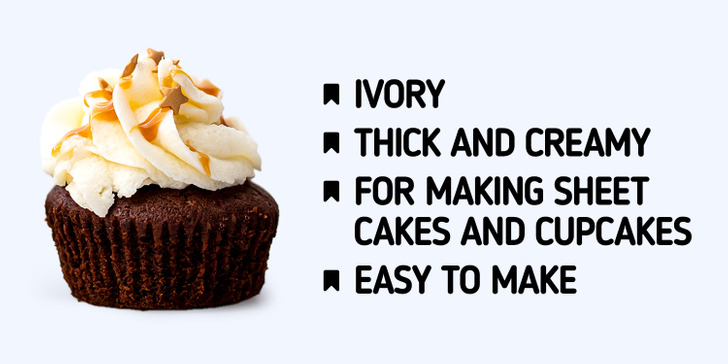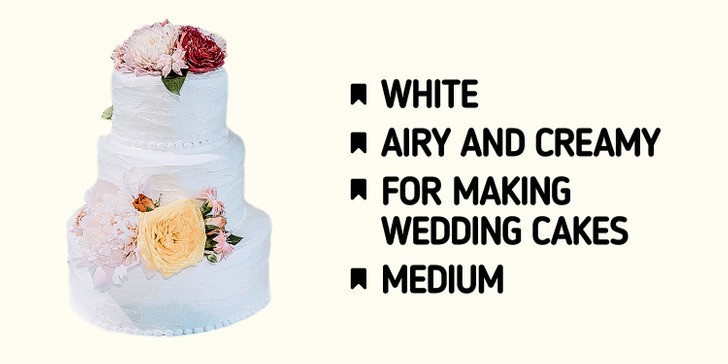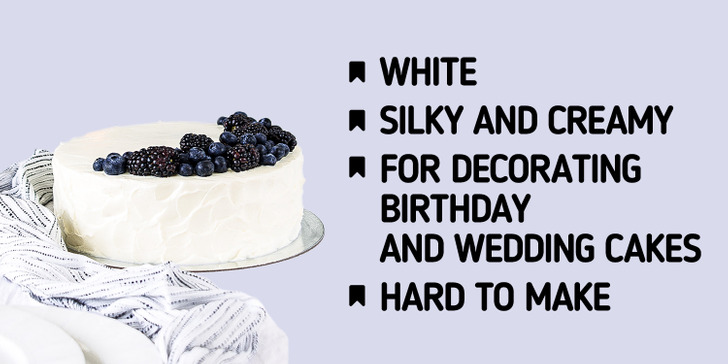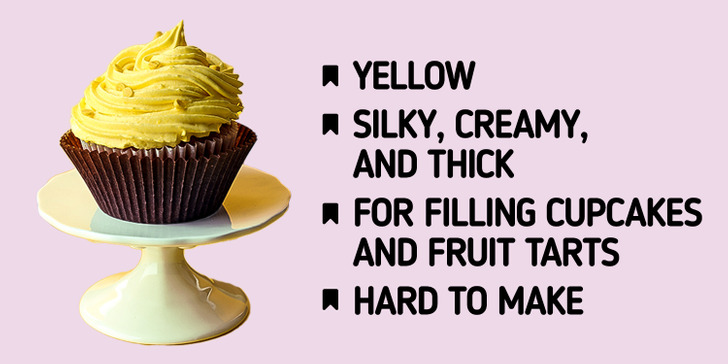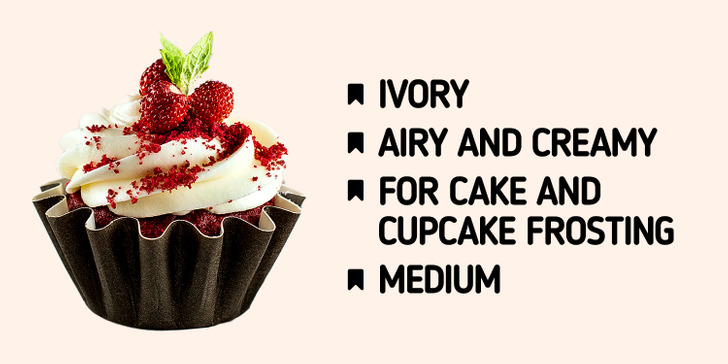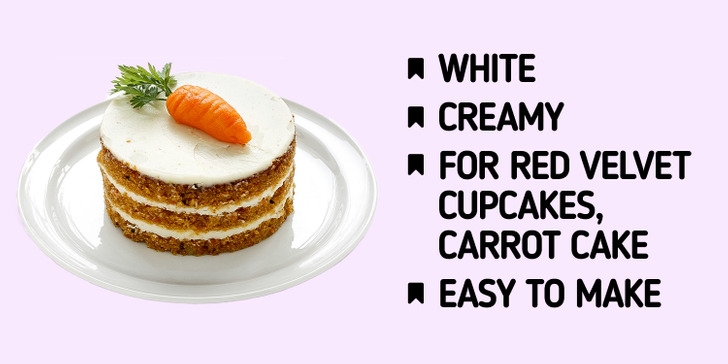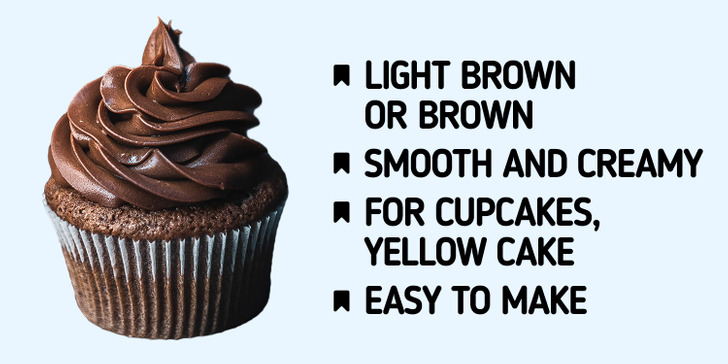A Guide to Cake Frosting
You may get lost with the variety of options if you decide to frost a cake. The kind of topping can make a difference if your goal is also to successfully showcase your baking.
5-Minute Crafts has found out what common frosting types there are and when you can use them in your baking.
1. Buttercream frosting
This is the most common type of frosting. It is also called American buttercream or simple buttercream frosting. To make this type of frosting, bakers mix powdered sugar with butter, they can also add milk or heavy cream. They whip the butter first, which is opposed to a cubed butter meringue frosting (where bakers slowly add butter chunks to the frosting). American buttercream is prepared without eggs.
- Flavor: very sweet
- Color: ivory
- Texture: thick and creamy
- When to use: for making sheet cakes and cupcakes
- Difficulty: easy to make
2. Swiss meringue buttercream
3. Italian meringue buttercream
This is whipped egg whites mixed with sugar, cream of tartar, and precooked sugar syrup. As Italian meringue buttercream melts less in warmer places, it is the main product in the baking industry and a great choice for upscale events.
- Flavor: mild buttery
- Color: white
- Texture: silky and creamy
- When to use: for decorating birthday and wedding cakes, great for outdoor events
- Difficulty: hard to make
4. French buttercream
Bakers use egg yolks rather than egg whites here, that’s why French buttercream is not a meringue. In addition, it’s considered to be the richest buttercream. To make it, you will need to mix sugar, water, egg yolks, salt, and butter.
- Flavor: rich and buttery
- Color: yellow
- Texture: silky, creamy, and thick
- When to use: for filling cupcakes and fruit tarts
- Difficulty: hard to make
5. Ermine buttercream
It’s also known as flour buttercream. You can use this frosting type if you need Swiss meringue buttercream but without eggs. Bakers also call it cooked frosting as you need to cook it before the buttercream comes together. All you need is flour, sugar, milk, and butter.
- Flavor: mild sweetness
- Color: ivory
- Texture: airy and creamy
- When to use: for cake and cupcake frosting (especially, red-velvet cakes)
- Difficulty: medium
6. Cream cheese frosting
The cream cheese frosting flavor is recognizable for its tanginess. Bakers use cream cheese for most of its fat instead of butter. To make it, you will need to whip room-temperature butter and cream cheese, then add powdered sugar.
- Flavor: sweet, tangy
- Color: white
- Texture: creamy
- When to use: for red velvet cupcakes, carrot cake
- Difficulty: easy to make
7. Fudge frosting
It can be described as a rich and decadent type of frosting. Fudge frosting is rather sweet, so use it with plain sponge cakes or tart desserts. Use chocolate bars or cocoa powder, butter, sugar, milk, and vanilla to create it.
- Flavor: decadent and sweet
- Color: light brown or brown
- Texture: smooth and creamy
- When to use: for cupcakes, yellow cake, and mildly flavored sponge cake
- Difficulty: easy to make
